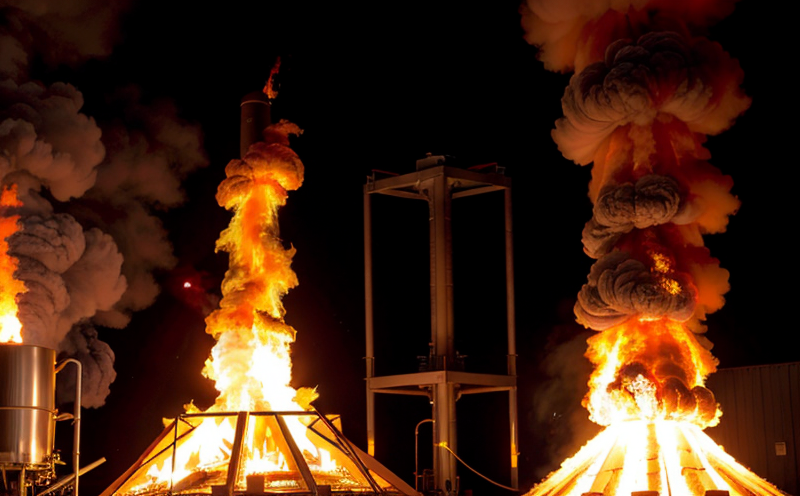Furniture Upholstery Flammability Testing
Flammability testing is a critical aspect of ensuring safety in environments where combustible materials are used, particularly in the furniture and upholstery industries. The primary goal of this test is to evaluate how quickly or slowly upholstery fabrics ignite when exposed to an ignition source, as well as the rate at which they continue to burn once ignited. This information is essential for compliance with various international standards aimed at reducing fire hazards.
The testing process involves exposing a representative specimen of fabric used in furniture upholstery to an open flame or other ignition sources. The duration and intensity of burning are then measured, along with the time it takes for the fabric to self-extinguish after removing the source of ignition. This data helps manufacturers understand the material’s inherent flammability characteristics.
One such standard widely recognized is ISO 13948-2, which provides guidelines for testing the flame spread and heat release rates of materials intended for use in upholstered furniture. Another relevant standard is ASTM D7065, which focuses on measuring the limiting oxygen index (LOI) to determine the flammability of a material.
The results from these tests are used by manufacturers to make informed decisions about fabric selection and design improvements that can enhance fire safety without compromising comfort or style. Understanding the specific requirements under different standards helps ensure compliance with local regulations such as California Technical Bulletin 117-2013, which sets guidelines for flame resistance of soft furnishings.
For quality managers and compliance officers, this testing ensures that products meet necessary safety requirements before they reach market. R&D engineers can use the insights gained from these tests to innovate safer materials and designs. For procurement teams, understanding the flammability characteristics is crucial in sourcing appropriate fabrics for new product lines.
- Ensures compliance with international standards and local regulations.
- Provides data on fire safety that can be used for design improvements.
- Aids in selecting appropriate materials for product development.
- Supports the creation of safer products, enhancing overall consumer protection.
Scope and Methodology
The scope of furniture upholstery flammability testing encompasses a range of procedures designed to assess the combustibility properties of fabrics used in upholstered furniture. The methodology involves preparing test specimens according to specified dimensions, ensuring they are representative of real-world conditions. Once prepared, these samples are exposed to standardized ignition sources, and their burning behavior is recorded.
Key components of this testing include:
- Preparation of test specimens
- Ignition with specific flame exposure times
- Metering the duration of burning
- Timing the period until self-extinguishment
- Measuring smoke density and heat release rates (if applicable)
The tests are conducted in controlled environments to ensure accurate results. Compliance officers can rely on these results for ensuring products meet stringent safety requirements, while R&D engineers use the findings to innovate safer materials.
Why Choose This Test
- Ensures compliance with international and local regulations like California Technical Bulletin 117-2013.
- Provides critical data for material selection and design improvements to enhance fire safety.
- Aids in meeting stringent safety requirements, thereby protecting consumers from potential hazards.
- Supports the development of innovative materials that balance comfort with safety.
- Promotes trust among customers by demonstrating a commitment to product safety.
- Reduces the risk of recalls and legal issues associated with non-compliance.
Competitive Advantage and Market Impact
Implementing furniture upholstery flammability testing can provide significant competitive advantages in the market. By ensuring that products meet or exceed safety standards, manufacturers can build a reputation for quality and reliability, which is crucial in gaining customer trust and loyalty.
Compliance with international and local regulations not only helps avoid potential legal issues but also opens up access to markets where stringent safety requirements are enforced. This ensures that products are accepted without delay or additional cost, thus streamlining the export process and reducing time-to-market.
Innovative materials and designs developed through this testing can set a brand apart in competitive landscapes, offering unique selling points that resonate with eco-conscious consumers who prioritize safety and sustainability. This differentiation can lead to increased market share and customer satisfaction.
Moreover, the ability to provide detailed reports and data on flammability characteristics allows manufacturers to communicate effectively with clients, highlighting their commitment to product safety. This transparency fosters stronger relationships and long-term partnerships.





